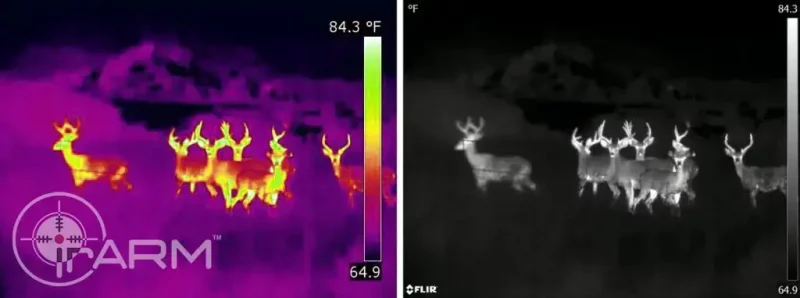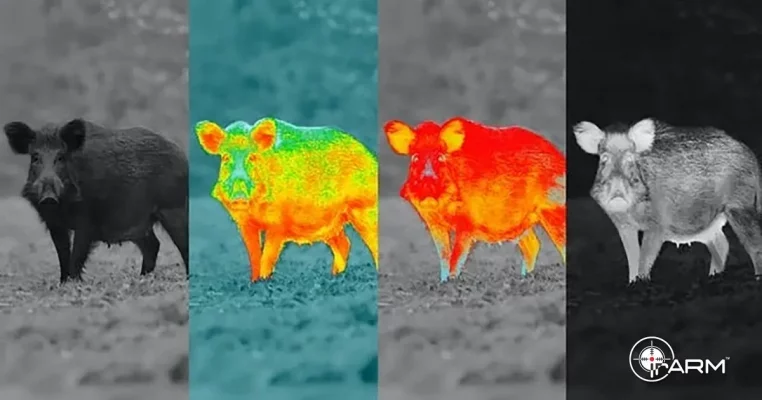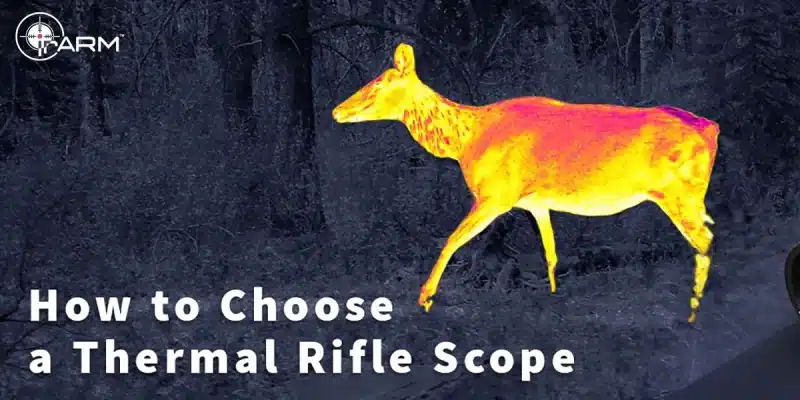
How Do You Hunt Hogs?
Part 1: Getting Ready Because feral hogs are a non-native species that compete for food with wildlife and livestock and


PhD in Optics, is an expert in the field of gun scopes and thermal optics with years of experience and numerous publications in academic journals.
When it comes to thermal imaging technology, the ability to detect heat signatures can make all the difference in the world. Whether it’s for hunting, surveillance, or even home inspection, thermal scopes are an essential tool for professionals and enthusiasts alike. At irARM™, we specialize in producing high-quality thermal scopes and thermal cores that offer exceptional performance and durability.
At its core, thermal imaging is a process that detects infrared radiation emitted by objects and converts it into a visible image. Every object emits some level of heat radiation, and this radiation can be captured and processed to produce a thermal image. The hotter an object is, the more radiation it emits, and the brighter it appears in a thermal image.
Thermal scopes use various types of infrared detectors, such as cooled and uncooled detectors. Cooled detectors offer higher sensitivity and resolution but are more expensive, while uncooled detectors are more common and affordable.
Thermal scopes work by using infrared technology to detect heat signatures emitted by objects, animals, or people. They consist of a thermal imaging camera that detects and converts infrared radiation into an electronic signal, which is then processed and displayed on a screen. The screen shows a visible representation of the heat signatures detected, allowing users to identify objects, animals, or people based on their heat signatures.
Thermal scopes are used in various fields beyond hunting and surveillance. They are crucial in search and rescue operations, firefighting, and industrial inspections to detect heat leaks and equipment malfunctions.

Thermal scopes are also useful in home inspection and maintenance, where they can be used to identify areas of heat loss or detect electrical faults. They are an essential tool for law enforcement and military personnel, who use them for surveillance and target identification.
While thermal scopes are a highly useful tool, they do have their limitations. One of the main limitations is their inability to detect color or texture. This means that it can be difficult to differentiate between objects that have similar heat signatures, such as two animals of the same species. They also have a limited range, which can make it challenging to detect small objects or those that are far away.
Unlike thermal scopes, night vision scopes amplify visible light to create an image. Thermal scopes detect heat signatures, making them effective in complete darkness and through obstructions like smoke or fog, while night vision scopes require some light to function.
When choosing a thermal scope, there are several factors to consider, including range, resolution, and image quality. At irARM™, we offer a range of high-quality thermal scopes that are designed to meet the needs of any outdoor enthusiast or professional.
In conclusion, thermal scopes are a highly useful tool for a wide range of applications, from hunting and wildlife observation to home inspection and surveillance. At irARM™, we are committed to producing high-quality thermal scopes and thermal cores that offer exceptional performance and durability. Whether you’re an outdoor enthusiast or a professional, we have the right tool for your needs.
Latest Innovations in Thermal Imaging: Recent advancements include enhanced image processing algorithms, increased detector resolution, and integration with digital devices for real-time data analysis. These innovations improve the accuracy and usability of thermal scopes.

Part 1: Getting Ready Because feral hogs are a non-native species that compete for food with wildlife and livestock and

In the realm of hunting, few pursuits are as thrilling and challenging as tracking and taking down the formidable wild

Introduction: Thermal scopes have revolutionized the way hunters, law enforcement professionals, and outdoor enthusiasts approach their activities. Unlike traditional scopes,
irARM™ makes high-quality thermal scopes and cores for outdoor enthusiasts, hunters, and law enforcement. irARM™ is the trusted option for those seeking dependable thermal imaging solutions.
Subscribe to Receive News and Promotions from irARM’s marketing team.
